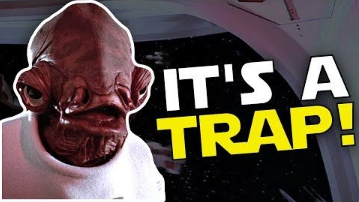Digital Marketing has a problem.
Should you work on digital tactics like SEO or PPC first? Or should you hone your strategy before you dive into the tactics?
Surely, the answer here is obvious: hone your strategy, then deliver it with tactics.
However, the rapid evolution of the digital marketing environment, from search engines to social media, has kept us all on our tactical toes, with strategy often taking a back seat.
The strange thing is, this worked for a good while. Being at the top of Google and getting big reach on social could deliver the goods during the first quarter of this century.
But times are changing. Everyone is online now. Economies around the world are struggling, and the competition is brutal.
In this post, I look at the importance of reintegrating strategy into your digital marketing to survive and prosper in a competitive marketing environment during challenging times.
The re-emergence of marketing strategy
These are competitive times.
Many countries are either in, or are on the verge of a mild recession.
Once successful, tactical approaches fail to bear fruit in this environment.
Being at the top of Google is not enough.
Success on the big platforms is getting ever more difficult.
Organic clickthrough rates for many commercial search queries on Google are plummeting. We have seen #1 place commercial keywords getting a 5% CTR. 100 people searched, and only 5 clicked that once-magical-business-generator of 1st place organic.
The image below shows four keywords with click-through rates between 2.9% and 8.3% and rock-solid 1st-place rankings.

Strong organic listings were once a goldmine, but they don’t deliver the traffic they once did.
Commercial traffic on Google is often hoovered up by ads and any SERP with shopping ads above the organic will see the majority of clicks go to paid.
Tactical expertise in paid work is also not the guarantee it once was. Running ads is getting easier. Campaigns like Google’s Performance Max campaigns auto-optimise to get you the best results and often outperform manual shopping campaigns when configured well and given time to learn.
Getting in front of people is not technically as hard as it used to be, so whilst you may rank well and run ads, so does the competition.
Everyone is everywhere.
Your competitors are only ever a few pixels and a click away.
You have to convert well, or you are just pissing in the digital wind (pardon my French).
This is the problem.
Traffic is not enough.
You need a strategy to make that traffic pay.
Not a tactical strategy – a real business and marketing strategy.
You must stand out, be different, add value, and cut costs – ideally all at once.
You need to generate new customers and maximise the lifetime value.
Strategy must be integrated into your marketing and work in a constant feedback and improvement loop. Strategy and tactics are key to success in 2024.
To get the best results, you must think strategically about the tactical platforms and where you spend your precious resources.
In this article, I will look at how we got here and outline some strategic approaches you can use to stand out and boost conversions to survive and prosper in this brutal war of marketing attrition.
The Tactical Trap

Everything used to be so simple.
The Yellow Pages, magazines, radio and TV. There is a reason why so many of those 90s ads are so memorable. Who can forget some of those jingles or classic TV ads? I am 48, and I still say Wassup! to my kids (Budweiser) and sing “The shake and vac, to put the freshness back” if I am vacuuming. And I am still a Secret Lemonade Drinker who often craves a carton of Um Bongo! Sad, I know!
Then, the Internet happened.
Websites. Email. Search engines. Social media. Organic. Ads. Analytics. Attribution. GDPR. AI. It is complicated out there, man, and just as you get a handle on something, it all changes, and you are back at square one (or page 2 ;o).
For 25 years now, being on the cutting-edge of these new digital tactics was highly lucrative.
Now, everyone, it seems, has caught up. The mega brands dominate. The offline brand dinosaurs are taking a slice. The little man is struggling.
This is not the chicken or egg problem it first appears as – this is a chicken and egg problem (answer that one evolution).
In 2024 and beyond, strategy and tactics must work together to succeed!
This is not a new idea.
There is an old quote that I like that illustrates this nicely:
“Strategy without tactics is the slowest route to victory. Tactics without strategy are the noise before defeat.”
The quote is often attributed to Sun Tzu and his classic work The Art of War. This Chinese military treatise from 500 BC has formed the basis of military strategy worldwide ever since (and is a firm favourite in business and marketing circles).
As it goes, the quote is not in the modern version of the book, despite its common attribution. Still, it is a concise enough summary of the book’s approach to strategy and tactics (and is most likely from an earlier translation).
Let’s break this down:
Strategy without tactics is the slowest route to victory.
The strategy needs to be delivered by tactics. Even a killer strategy is of no use on its own if no one knows about it! You may survive, but it will be painfully slow going and never reach its true potential. Now, where is the fun in that?
Tactics without strategy are the noise before defeat.
This is where most small business marketing could be better. SEO, PPC, social media etc. All focus is given to the platforms themselves. However, without an underlying strategy, exposure on these platforms will bleed you dry in a painful war of attrition (often against companies with far deeper pockets whose goal is simply to keep at it until they run you out of town).
Strategy AND Tactics
The core message of this quote and The Art of War is that strategy and tactics must work together in perfect harmony to achieve the best possible results.
Strategy informs tactics. Tactics deliver strategy. Review and refine. Win-win.
It is easy now to buy traffic, but that does not mean they will buy. You need a strategy to stand out from the crowd. You can’t just do the same thing and say the same thing as everyone else. That makes for a buyer’s market where the only deciding factor is price – that is not a game that successful, growth-hungry businesses should play!
You need to be different, better or offer more value (often all three at once).
Strategy & The Art of Marketing

Strategy is a funny word.
Sometimes, strategy means planning.
From a small business and marketing perspective, though, we are talking about offering something new, better, higher value, lower cost, or even just plain different from the competition.
Strategy is what you do, how you do it, your prices and your service.
The best strategies run through every touch point in your business.
Strategy does not have to be complicated
Strategy can seem complicated, but it need not be, as these following two examples I stumbled on this week illustrate.
Logs
I needed some more wood for my log burner.
The product images (in the click-greedy Google shopping ads) showed a person standing next to a pallet of logs to help give a sense of scale—that got me to click.
Then, the website promoted a newsletter. If I signed up, not only would I get 10% off, but they would plant a tree. That seemed nice, virtuous even, so I signed up!
I am now not only on the mailing list but also have an affinity with this company and its values. Win-win.
Apprentices
We have had success with apprentices at Bowler Hat, and I receive an email almost daily from a new agency, but they are generally all saying the same old things are ignored. There are plenty of tactics (as the noise before defeat).
However, I recently received an email from an agency that has integrated classic marketing into the digital marketing apprenticeship. This stood out, so I called this company to discuss what they did differently and how that can help us.
This differentiation made them stand out and grabbed my attention.
Strategy can be simple.
There is nothing overtly complicated about these examples – strategy does not have to be hugely complex.
The hierarchy of strategy
One of the challenges of strategy is that it needs to be applied at all levels of the business. You need a product, marketing, and sales conversion strategy at the most basic level.
You can then break this down further, and your marketing strategy will need a sub-strategy for each tactic. For instance, you need an SEO strategy to succeed with organic search.
One problem I often hear from working with thousands of businesses over the last twenty years is that this can seem overwhelming. I would like to counter that idea and suggest that, in most cases, this does not require immense change.
When talking to business owners and marketers, most businesses often already do things that make them unique, different or better than the competition; the big problem is that they don’t clearly explain this well to potential customers.
The businesses are unique, but the websites, messaging and marketing are not.
The key is to detail your competitors, customers, and what you do carefully so you can unearth the existing differences and uniqueness in how you operate and then clearly articulate that to your prospective customers.
Marketing Strategies
You can use a few classic approaches to stand out when reviewing your business operations and marketing, like in the examples above.
1. Cost
There are many ways to utilise cost as an element of strategy:
- Low Price Strategy: Being the most affordable in the market.
- Premium Pricing: Create a perception of higher quality through premium pricing.
- Bundling: Stack value by bundling products or services at a lower combined price.
- Discounts & Sales: Boost sales to obtain new customers with limited-time offers and promotions.
2. Value
As an alternative to pricing you can focus on value. Here, costs may be inline with the market averages, or a touch higher, but you provide more overall value than your competitors.
Some ways to do this include:
- Quality: Where customers value quality over price.
- Positioning: Brands like Apple, BMW, etc., provide a level of status with their products that elevates them above the pure nuts and bolts of what is provided.
- Customer Experience: Many products and services are about the journey as much as the product itself. Think of wedding rings or eating out. A focus on the end-to-end customer experience can provide additional value.
- Product: In tech, product innovation drives value perception. The AI features cooked into my Pixel 8 meant I upgraded before my contract ended and was not even looking at competitor products!
- Brand Values: As with the example of the logs above, aligning with sustainability or ethical values can be a value-added proposition for the right customers, who are willing to pay more to work with a company that is aligned with their own beliefs.
- Customisation Options: Provide customisation options that allow customers to tailor the product to their specific needs or preferences, adding a personal touch that can command a higher price.
- Warranties and Guarantees: Offer longer or more comprehensive warranties and guarantees, signaling confidence in the product’s longevity and quality.
3. Differentiation
Being different is far more effective than just trying to be better. The example of the apprenticeship agency, that unique element to what they were offering, made them stand out and grabbed my interest so I wanted to find out more.
Some ways to differentiate your marketing include:
- Branding: Having a unique feel to your branding can help you stand out. We currently work with a female-led solicitors firm that stand out by having a much more upbeat brand than the dry competition.
- Niche: You can specialise and stand out by targeting a smaller section of a larger audience. This allows you to refine the services and your marketing messages to really serve that specific audience.
- Customer Service: Nobody says they have bad customer service, so it is often a hard case to win by claiming your customer service is good. However, by adding additional aspects that help your customers with their problems and objectives, you can stand out.
- Sustainability: As with customer service, you need to go a step further than the competition but something simple, like planting a tree, is a great way to stand out.
- Educational content and tools: Educational content and tools can help you build a relationship with the customer before the sale.
- Loyalty programs: Loyalty programs and customer discounts can help win and retain business.
- Intersectional Knowledge: This is a marketing site, but I have a strong interest in evolutionary psychology, so I try to leverage that to approach things from a different perspective, which (I hope) makes us unique.
4. Blue Ocean
A blue ocean strategy simultaneously pursues differentiation and low cost to open new markets and create additional demand. The idea is that the competition becomes irrelevant by creating new market space.
This powerful strategic framework combines two very powerful strategies, differentiation and low cost, to create something entirely new.
The approach to low cost and differentiation using the blue ocean strategy has massive utility for most businesses. Lowering costs is often achieved by cutting everything the customer does not value. Differentiation can be subtle, and there is an example in the book that I particularly like about the red wine industry.
Typical wineries operate in highly competitive red oceans. Yet, instead of competing on common wine nuances like tannins, fermentation, and vintage, which confuse and intimidate many, Yellow Tail Wine decided to focus on fun and accessibility, targeting more of the beer audience.
The same product really. Less faff, so lower prices. Broader audience.
Before long, Yellow Tail expanded its total wine sales and became the biggest wine seller in the US.
If you are considering a strategic shift, I strongly recommend the Blue Ocean Strategy book. See if you can find a way to implement lower costs, higher value, and differentiation within your business and marketing.
What is right for any business always varies depending on the various inputs, but if I had to recommend any approach, it would be to work towards creating a blue ocean-style strategy for your business.
Tactics to deliver your strategy
Let us revisit the quote briefly:
“Strategy without tactics is the slowest route to victory. Tactics without strategy are the noise before defeat.”
To succeed, strategy and tactics have to work together.
For years now, we have been able to get away with a primarily tactical focus due to the evolution of the digital marketing space, but those days are all but behind us. There are no magical marketing strategies.
With a clear strategy, you will maximise the results from your digital tactics, cut costs and make the competition irrelevant.
With proper time, consideration, and a well integrated strategy, you can stand out, offer lower prices and higher value, and send a message that people can’t wait to hear.
You will no longer be just another noise shouting into the digital void – but rather, you will have the best kind of marketing – the marketing that people are pleased to receive!
Let’s talk about your strategy
Do you have any questions, comments or thoughts about strategy? Drop a comment below or drop me a line – I am always excited to talk about strategy and how you can make a big difference with the smallest of changes!
Further Reading







One Response
“Strategy vs Tactics – Navigating Digital Marketing’s Chicken & Egg Dilemma”
This insightful article delves into the intricate relationship between strategy and tactics in the realm of digital marketing, shedding light on the age-old question of which comes first. As someone immersed in the dynamic world of digital marketing, I’ve often pondered this dilemma myself.
The analogy of the chicken and egg perfectly encapsulates the cyclical nature of strategy and tactics. While a solid strategy provides the overarching framework and direction for a marketing campaign, it’s the tactical execution that brings that strategy to life and drives tangible results. However, crafting an effective strategy without a deep understanding of the tactical landscape can lead to missed opportunities and ineffective implementation.
Conversely, diving headfirst into tactics without a clear strategic vision can result in a disjointed and haphazard approach, ultimately undermining the overarching goals of the campaign. It’s a delicate balancing act that requires careful consideration and iterative refinement.
I appreciate the article’s emphasis on the symbiotic relationship between strategy and tactics, highlighting the importance of aligning both elements to achieve optimal results. By fostering collaboration between strategic thinkers and tactical experts, organizations can create cohesive digital marketing campaigns that deliver measurable impact.
Ultimately, it’s not a matter of strategy versus tactics, but rather a harmonious integration of both elements to drive success in the ever-evolving landscape of digital marketing. This article serves as a valuable reminder of the nuanced interplay between strategy and tactics, offering practical insights for navigating this complex terrain.”